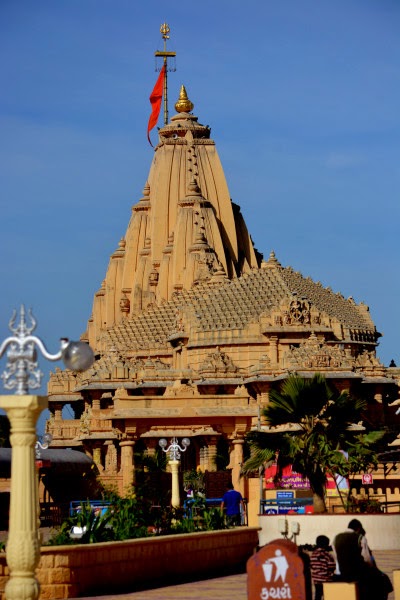Nageshwar Jyotiring is 15km off Dwaraka.
We reached Dwaraka from Somnath late night. We checked into a hotel and asked about details of Nageshwar temple. The hotel owner was very helpful. He said that there is a bus which takes you on a darshan of all the temples in Dwaraka which covers Nageshwar Jyotirling too. The bus was to leave at 8.30. We are light sleepers. Due to continuous travel we woke up at 7.30 and rushed out at 8.00.
The bus left at 8.30AM
The structure is relatively new and is built by T- Series. There are buses which take you to the temple
We had a fantastic darshan, We decided to perform puja and bought a puja plate from a counter next to the sanctum.We did a small puja to the jyotirling.
We reached Dwaraka from Somnath late night. We checked into a hotel and asked about details of Nageshwar temple. The hotel owner was very helpful. He said that there is a bus which takes you on a darshan of all the temples in Dwaraka which covers Nageshwar Jyotirling too. The bus was to leave at 8.30. We are light sleepers. Due to continuous travel we woke up at 7.30 and rushed out at 8.00.
The bus left at 8.30AM
The structure is relatively new and is built by T- Series. There are buses which take you to the temple
We had a fantastic darshan, We decided to perform puja and bought a puja plate from a counter next to the sanctum.We did a small puja to the jyotirling.













































